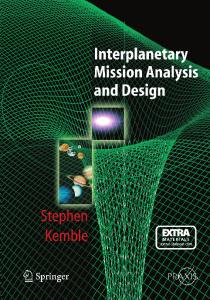Characteristics and applications of interplanetary coronal mass ejection composition
- PDF / 5,853,770 Bytes
- 17 Pages / 612 x 792 pts (letter) Page_size
- 46 Downloads / 260 Views
. Review .
Print-CrossMark
https://doi.org/10.1007/s11431-020-1680-y
Characteristics and applications of interplanetary coronal mass ejection composition SONG HongQiang1* & YAO Shuo2 1 Shandong
Provincial Key Laboratory of Optical Astronomy and Solar-Terrestrial Environment, Institute of Space Sciences, Shandong University, Weihai 264209, China; 2 School of Geophysics and Information Technology, China University of Geosciences (Beijing), Beijing 100083, China Received May 23, 2020; accepted June 19, 2020; published online August 27, 2020
In situ measurements of interplanetary coronal mass ejection (ICME) composition, including elemental abundances and charge states of heavy ions, open a new avenue to study coronal mass ejections (CMEs) besides remote-sensing observations. The ratios between different elemental abundances can diagnose the plasma origin of CMEs (e.g., from the corona or chromosphere/photosphere) due to the first ionization potential (FIP) effect, which means elements with different FIPs get fractionated between the photosphere and corona. The ratios between different charge states of a specific element can provide the electron temperature of CMEs in the corona due to the freeze-in effect, which can be used to investigate their eruption process. In this review, we first give an overview of the ICME composition and then demonstrate their applications in investigating some important subjects related to CMEs, such as the origin of filament plasma and the eruption process of magnetic flux ropes. Finally, we point out several important questions that should be addressed further for better utilizing the ICME composition to study CMEs. coronal mass ejection, interplanetary coronal mass ejection, elemental abundance, ionic charge state, magnetic flux rope, magnetic cloud, filament, flare Citation:
Song H Q, Yao S. Characteristics and applications of interplanetary coronal mass ejection composition. https://doi.org/10.1007/s11431-020-1680-y
1 Introduction Interplanetary coronal mass ejections (ICMEs) refer to the counterpart of coronal mass ejections (CMEs) in the interplanetary space, which are an energetic explosive phenomenon occurred in the solar atmosphere [1–4]. When interacting with the Earth’s atmosphere, ICMEs can induce strong geomagnetic activity [5, 6] and seriously influence our high-technology activities through damaging satellites, overloading power grids, and disrupting GPS navigation systems [7, 8]. Therefore, it is of great significance to investigate CMEs/ICMEs for both astrophysics and space weather. Theoretical studies suggest that CMEs take place due to the eruption of magnetic flux rope (MFR, a coherently *Corresponding author (email: [email protected])
Sci China Tech Sci, 2020, 63,
helical magnetic structure with its field lines winding around one central axis more than one turn), which can be formed prior to [9–11] or during solar eruptions [12–14] through magnetic reconnection occurred in the corona. So far, none of physical mechanisms can produce a CME without involving the MFR.
Data Loading...











